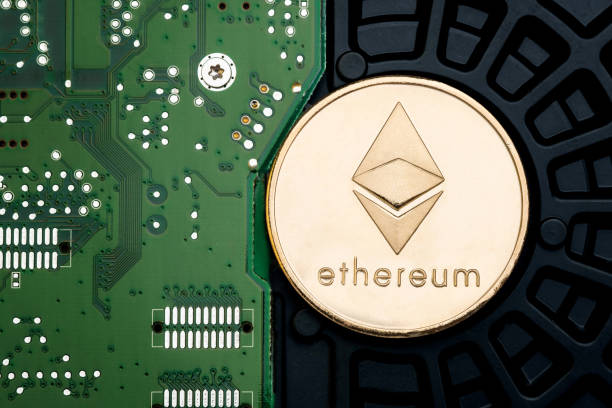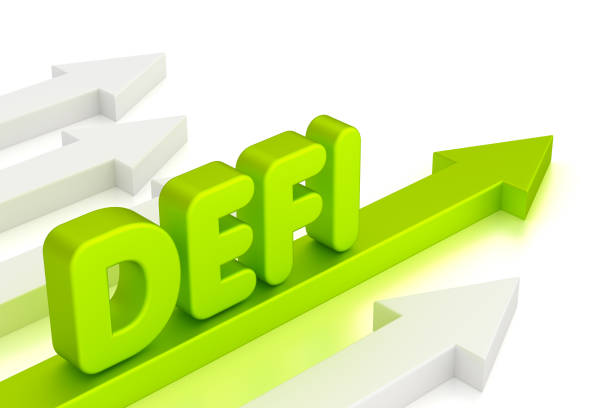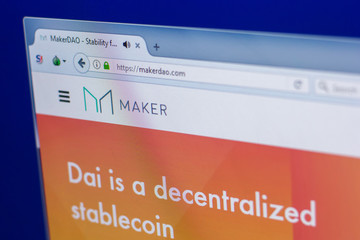Ethereum has been growing exponentially in the past year or so in terms of the different adoption metrics, including daily value transferred and active addresses. Multiple applications in the space of decentralized finance (DeFi) have been the key drivers behind the massive growth.
Many investors that are new to the crypto asset space have been quite mystified by the yields that can be achieved with the rise of the new platforms. But, there is a lingering criticism that alleges Ethereum’s recent success is nothing more than a house of cards.
First, many worries are surrounding Ethereum at the base layer with issues and rumors emerging about centralization. For instance, much of the activity recorded on Ethereum is achieved through a centralized entity called Infura. Currently, it is becoming very challenging to run an Ethereum full node as activity surges on the network.
Furthermore, there is a forthcoming move to an entirely different consensus mechanism in the form of proof-of-stake (PoS). There also exists risks at the application layer with regards to the reliance on centralized stablecoins. These stablecoins are believed to be developer centralization backdoors in the projects that are supposed to be trustless and decentralized.
The Ponzinomics surrounding most of the ERC-20 tokens issued on the Ethereum platform, questionable cryptoeconomics, buggy smart contracts, and DeFi governance tokens getting centralized in a few hands are issues to be worried about.
In short, critics say that the Ethereum community is taking shortcuts to adoption and it might come back to haunt them when one of the pieces is removed and the ETH economy comes crashing down.
Centralized Stablecoins, Ponzi Games, and “DeFi”
Based on data acquired from ETHGasStation, two of the top four uses of the Ethereum network’s computing power in the last 30 days (at the time of publication) have been to transfer USDC and USDT stablecoins. These coins are pegged to the value of the USD.
Growth in transfer volume of the centralized stablecoins on Ethereum is normally believed to represent the network’s underlying value proposition. Many users now think that using these stablecoins on the ETH network should result in a higher price of ETH. Notably, the burning of ETH to pay for stablecoin transactions is a critical tenet of the “ultrasound money” meme that has come up in the Ethereum space recently.
Nonetheless, there are two significant risks associated with the heavy use of stablecoins on Ethereum. One risk is that governments, legislators, and regulators may prohibit people from making pseudonymous transactions with US dollars over the internet. If such a scenario happens, it would result in an identity crisis for Ethereum in general.
The platform’s alleged benefits are set around the use of different assets and currencies instead of ETH only. Today, regulators are not worried about the use of stablecoins on Ethereum as a result of critical privacy issues on the network and other networks that are compatible with the Ethereum Virtual Machine (EVM).
Firms like Chainalysis may help regulators determine the real users behind the pseudonymous Ethereum account that has a stablecoin balance. Thus, stablecoins are not making it easy for users to do illegal business using US dollars on the internet.
Other risks exist apart from regulators clamping down on the use of stablecoins on public blockchains like Ethereum. If all these centralized coins have the regulator’s approval, what is the need of issuing them on public blockchains?
The need for a public blockchain becomes complex when one is not seeking regulatory arbitrage. Thus, more efficient platforms may offer a cheaper service by adding more centralization to the backend. This scenario is happening with the USDT transaction volume on Tron (TRX) exceeding its volume on Ethereum in early April. But, Ethereum has since regained the lead.
Moreover, lots of the Ponzi-Esque activity on Ethereum is migrating to Binance Smart Chain where there are more active addresses and transactions daily than what is recorded on Ethereum. The RSK sidechain for Bitcoin (BTC) might be preferred by those who want to use bitcoin as their collateral and unit of account when transacting in the DeFi world. In their case, a separate token is not required for gas payments.
USDC and USDT are the biggest gas consumers on the Ethereum network. But, they are quite important to the Ethereum economy in general. The stablecoins account for a huge percentage of the activity in most of the popular DeFi applications on Ethereum. This information is viewable on the stats pages for the most popular DeFi projects like Sushiswap, Uniswap, Compound, and many others.
A lot of volume on DeFi exchanges comprises Ponzi games like SHIB and ELON, which can not be listed on more centralized and regulatory-compliant exchanges. This excessive reliance on centralized stablecoins and Ponzi games for adoption are present in all major decentralized finance apps on Ethereum. Notably, Curve Finance is effectively developed wholly around this concept.
Away from the explicit Ponzi games and centralized stablecoins, ERC-20 tokens operate like the traditional stocks. They pay dividends to holders based on the revenue that is generated by a particular DeFi application. However, all these tokens are reliant on centralized stablecoins and the Ponzi games for generating most of their revenue.
For instance, what would Uniswap be worth if there were no useful tokens to trade against ETH?
Another risk that comes with these ‘DeFi stocks’ is that a new developer may come and fork out the need to pay more fees to the DeFi project instead of the base fees that are needed to send transactions on the base Ethereum network. That is the case that happened with the 0x protocol.
Also, another developer may copy a DeFi project’s codebase and tweak it to design an enhanced, competing project without a lot of effort. A great example is what happened when Sushiswap forked Uniswap.
People are using these DeFi apps due to the high yields that can be generated on their stablecoins, ETH, and other ERC-20 tokens. Yields come from dividends for holders of DeFi stocks, an overcollateralized loan, and the printing of new tokens to give away as incentives for people to use a specific DeFi app.
Nevertheless, inflating the supply of a DeFi project’s token to gain new users can only work over the near term. That is the problem that bitcoin is intended to solve. In most cases, the newly-created tokens are then staked themselves aiming to generate more yield.
Does Any Fundamental Utility Exist Here?
A significant exception to the issue about the heavy use of centralized stablecoins in DeFi applications is MakerDAO. It happens to be the biggest DeFi app based on total value locked (TVL). But, the platform does not come without its fair share of issues as well.
The over-collateralization requirements for developing DAI mean that this system does not scale. That is the reason why different ERC-20 tokens and stablecoins have been included as alternative collateral options to Ethereum.
Centralization issues also plague the federation of oracles that run the price feeds that are used in the MakerDAO system. Additionally, there are worries about the concentration of the MKR project’s governance tokens being held by a few hands.
In most cases, the federated security model is brought up as a critique of BTC sidechains like Liquid and RSK. It is, however, rarely regarded as a possible risk in the Ethereum community with regards to their DeFi apps.
The oracle setup has been a major issue that may be unsolvable with regards to the same type of assurances users get when they hold bitcoin the base Bitcoin blockchain. Thus, it brings in doubts whether a decentralized stablecoin for the consumers will ever become a possibility.
Furthermore, a bitcoin-collateralized stablecoin already exists on the RSK sidechain that exists in the form of Dollar on Chain (DOC) which is part of the bigger Money on Chain platform.
The counterparty risks appear inherent to stablecoin systems. But, it is not clear whether there is anything to gain from having massive decentralization at the base layer than what RSK offers. Mostly taking into context the tradeoffs in terms of efficiency and lack of a need for a new token that can be used for gas payments.
Most of the interesting ETH DeFi apps feature the creation of such derivatives assets based on collateral held in Ethereum, and ERC-20 token, or a combination of both. Synthetix (SNX) is a great example although it is yet to make it to the top ten based on gas usage or TVL.
The idea involved aims at creating synthetic versions of real-world assets like the Apple stock or gold through derivatives that are backed by the protocol’s underlying SNX token. Nonetheless, the platform has a huge challenge in terms of over-collateralization, needing 7.5x collateral to back its synthetic assets wholly.
That is a use case that is affected by the oracle problem too. Also, the use of SNX instead of ETH as collateral for the assets brings up the issue of misaligned incentives for developers who are creating on Ethereum. The incentive aims to pump the value of these tokens instead of ETH. A similar occurrence is seen in the case of Chainlink’s LINK token.
It seems like the most useful ethereum apps are those that involve taking loans against some collateral that might not even be denominated in ETH. That type of functionality is available on the Bitcoin sidechains RSK (through Sovryn and Money on Chain) and Liquid (via Hodl Hodl Lend).
Several centralized exchanges offer this financial service. But, please note that there is already lots of liquidity in BTC than ETH, and if all fluff of Ponzi games and centralized stablecoins is eliminated, the liquidity advantage for bitcoin would expand massively. It means that the case of using ETH as collateral over BTC in such DeFi systems weakens.
Eventually, all that uncertainty about the probable outlawing of stablecoins, smart contract risk, oracle risk, the use of DeFi apps if stablecoins are banned, and unsustainable yield-farming initiatives arising from token printing, increased competition from EVM-compatible chains like RSK and Binance Smart Chain.
Notably, most of the other aspects of the Ethereum economy trickle down to the underlying ETH asset itself that has the major impact of making ETH less useful as money and, hence, less useful as collateral.
A strategy to consider ETH as money instead of characterizing it as gas is maybe the ideal move for the ETH proponents. But that change might be coming too late since Bitcoin also has various avenues through Liquid, Lightning Network, and RSK to do decentralized finance things without having to introduce a new token.











